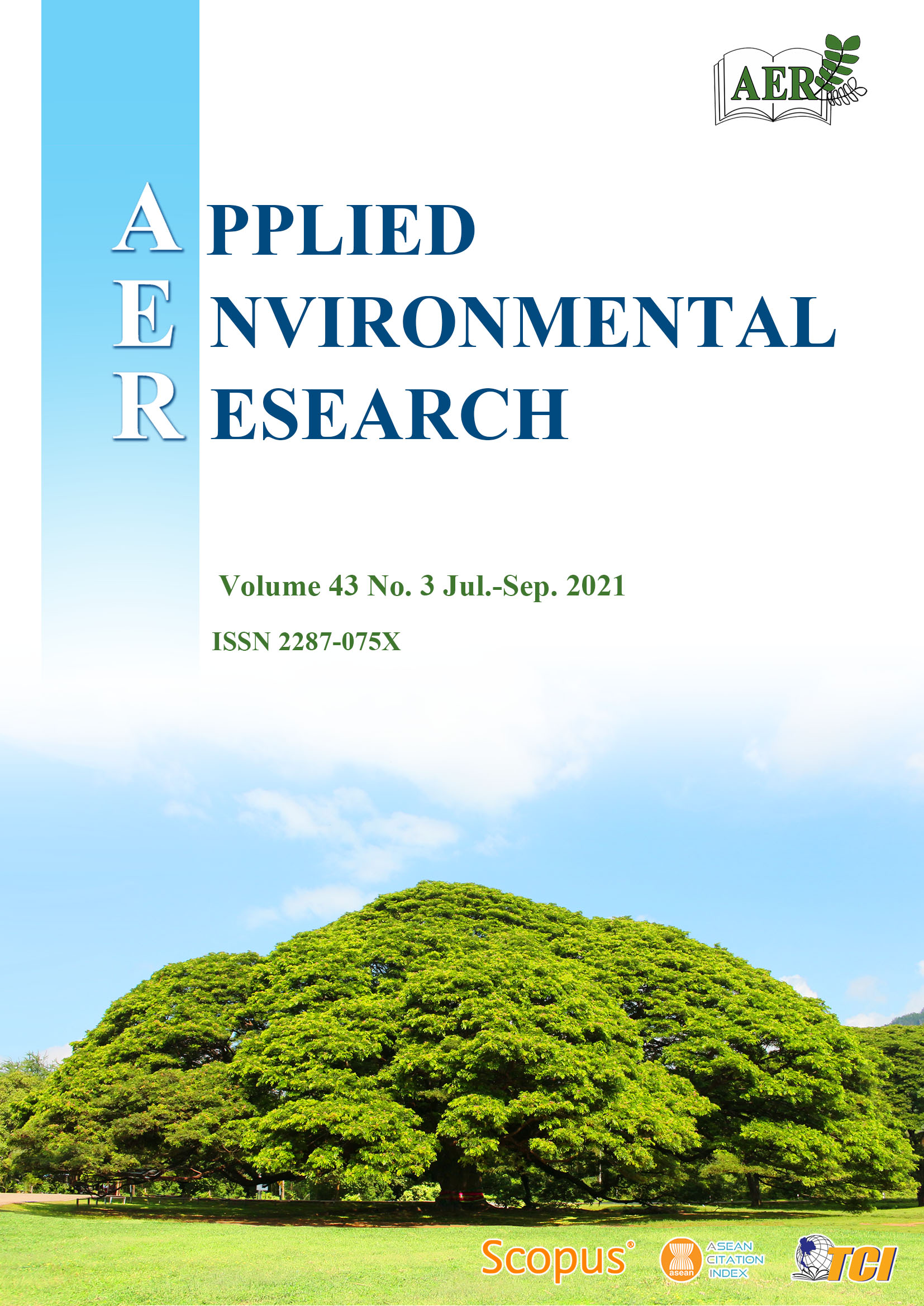Monitoring the Land Cover Changes in Mangrove Areas and Urbanization using Normalized Difference Vegetation Index and Normalized Difference Built-up Index in Krabi Estuary Wetland, Krabi Province, Thailand
Main Article Content
Abstract
Krabi Estuary Wetland (KEW) is an outstanding wetland with an estuary environment. At present, the tourism industry has rapidly grown, resulting in the impact of land cover changes. This research aims to assess the changes that have occurred in the KEW from 1999 to 2020 using NDVI and NDBI for monitoring changes in mangrove areas and urbanization in Krabi Province, Thailand. Landsat satellite images in years 1999, 2009 and 2020 were classified by using a band ratio to create land cover maps. The results show that NDVI between 0.41–1.00 clearly shows the mangrove forest area, while NDBI between 0.01–0.40 shows urban and built-up land, and 0.41–1.00 appears as bare land. The NDVI overall accuracy assessment is 82.88%, 97.46% and 88.25% with Kappa values of 0.64, 0.92, and 0.85 for year 1999, 2009 and 2020, respectively. The NDBI overall accuracy assessment is 92.81%, 77.11% and 64% with Kappa values of 0.93, 0.77, and 0.63 for year 1999, 2009 and 2020, respectively. In addition, areas that are sensitive to land-cover change appear around the Chi rat River, Pak Nam Krabi River, and Yuan River, which are tourist areas close to the Krabi and Ao Nang communities. Therefore, it is necessary to speed up the problem solving and find measures to prevent mangrove forest degradation in these 3 mangrove forest areas so that the mangrove forest areas will not decrease rapidly in the future. This research can be valuable for land-cover management in the KEW by policy and decision makers.
Article Details

This work is licensed under a Creative Commons Attribution-NonCommercial 4.0 International License.
Published articles are under the copyright of the Applied Environmental Research effective when the article is accepted for publication thus granting Applied Environmental Research all rights for the work so that both parties may be protected from the consequences of unauthorized use. Partially or totally publication of an article elsewhere is possible only after the consent from the editors.

